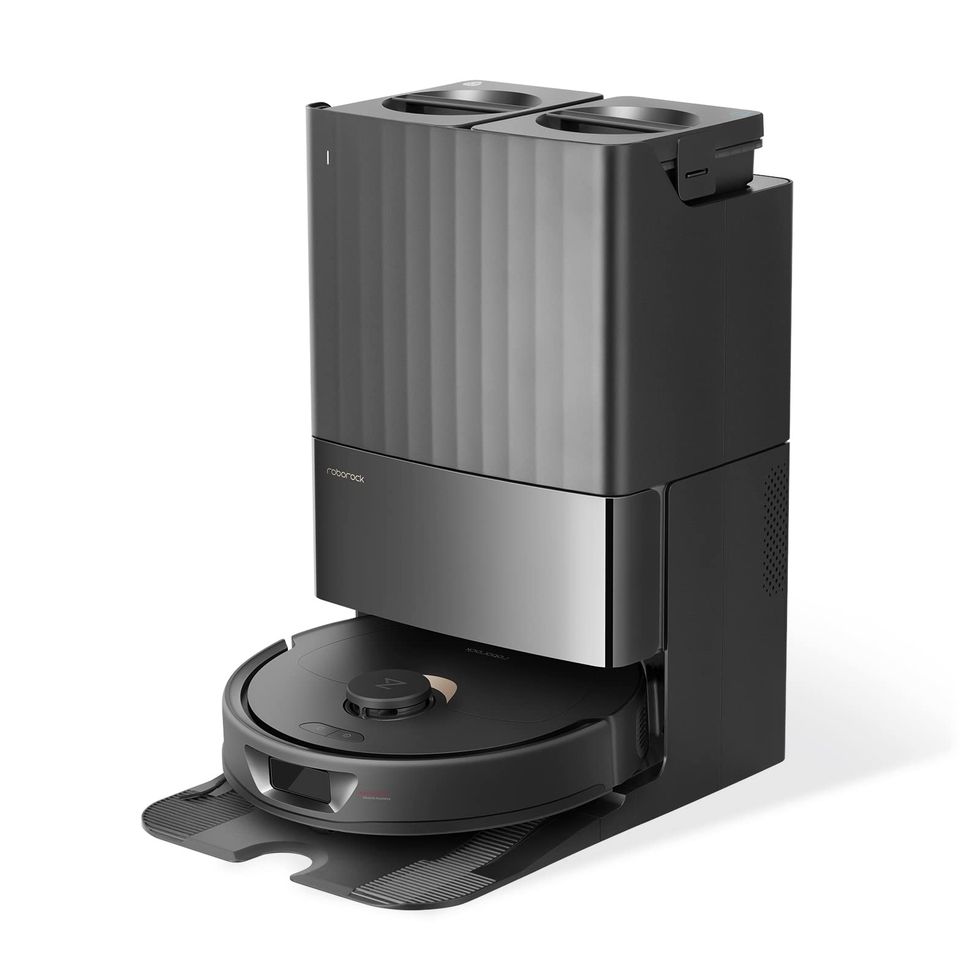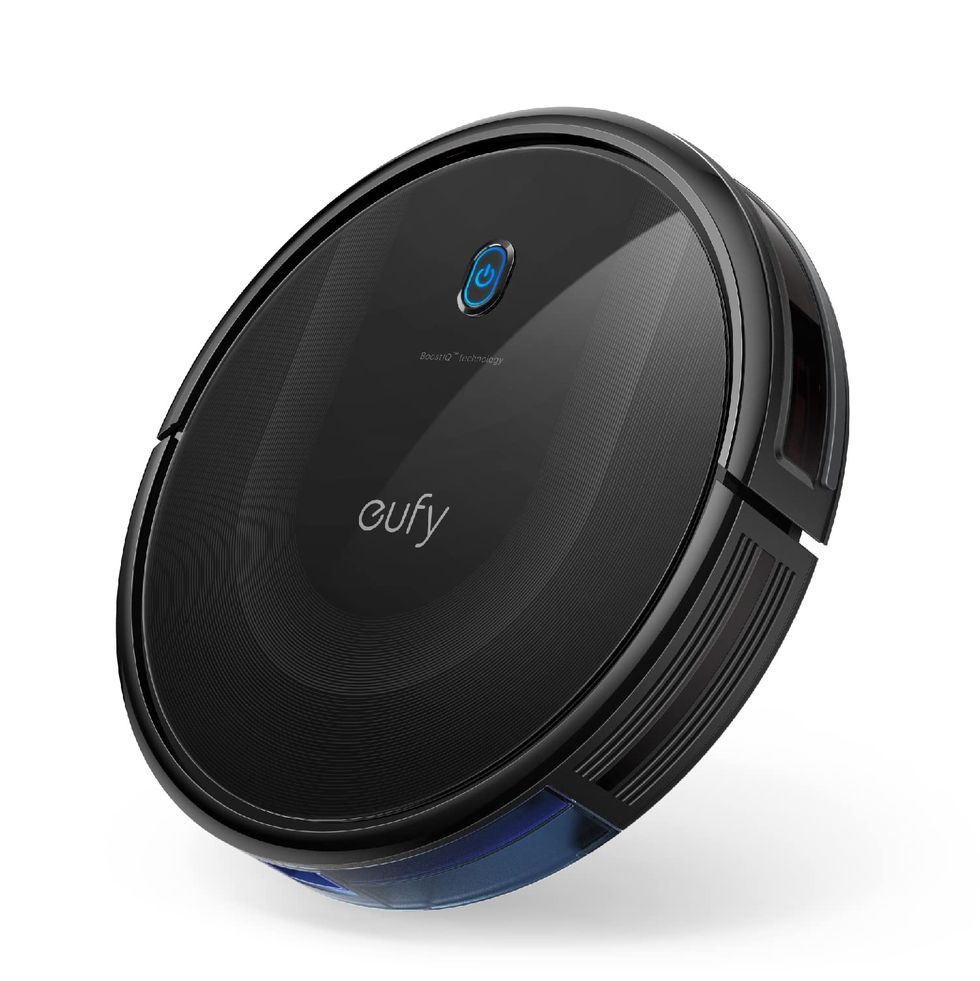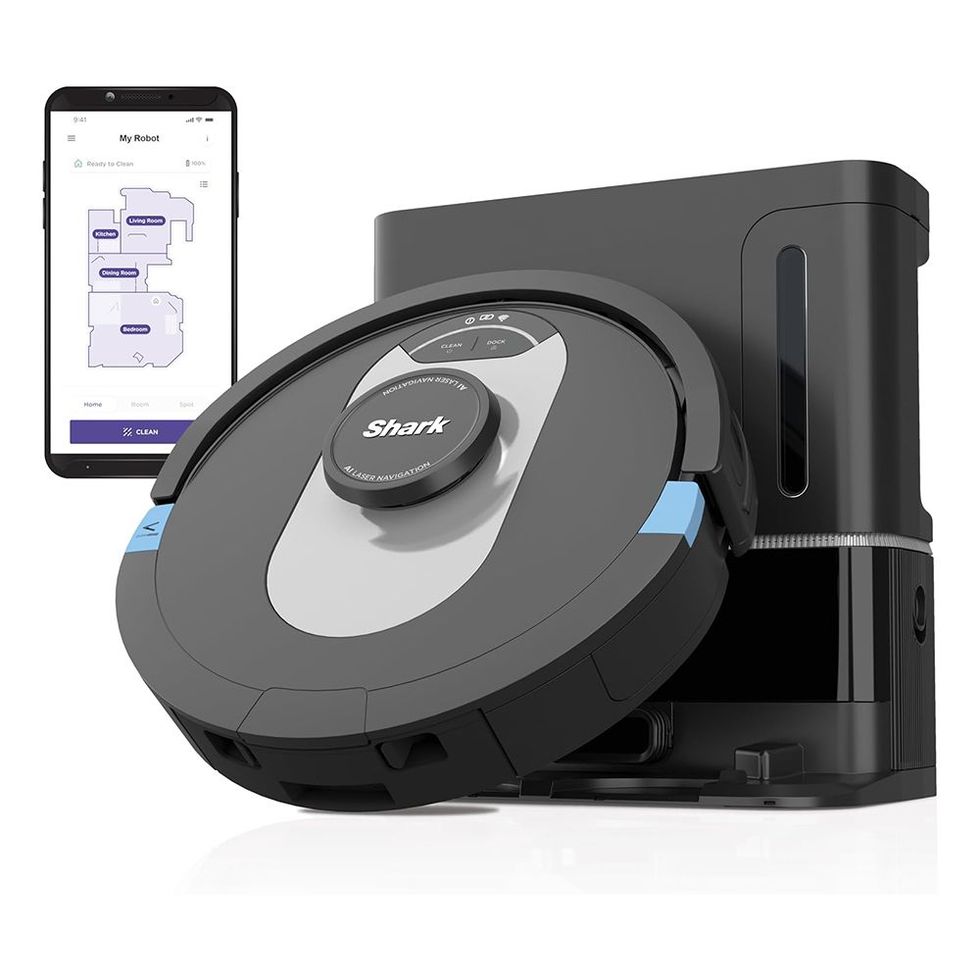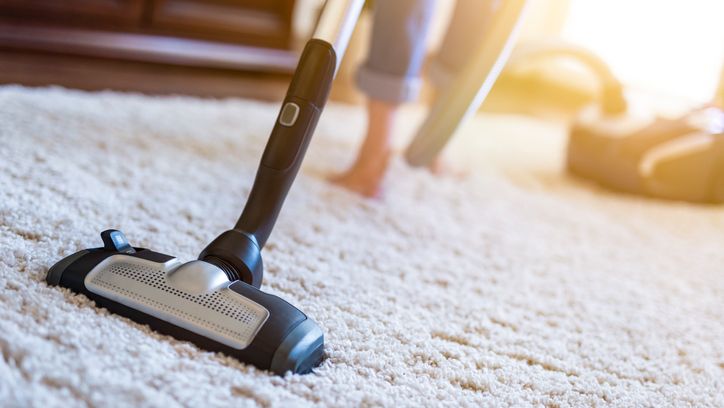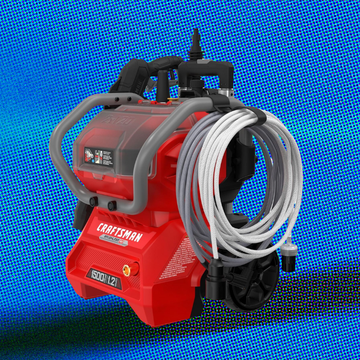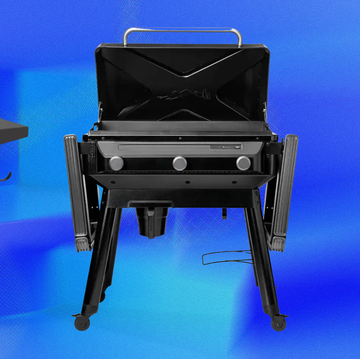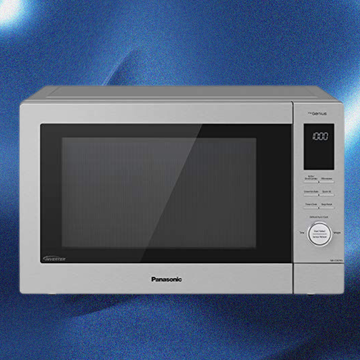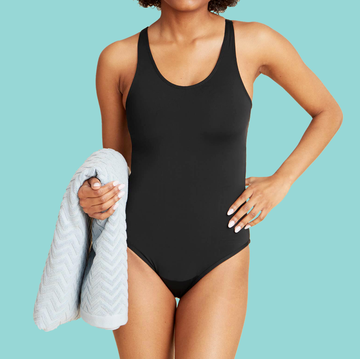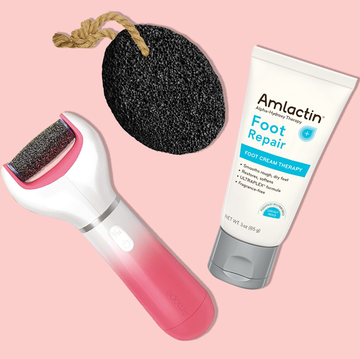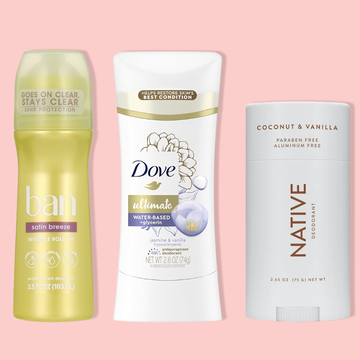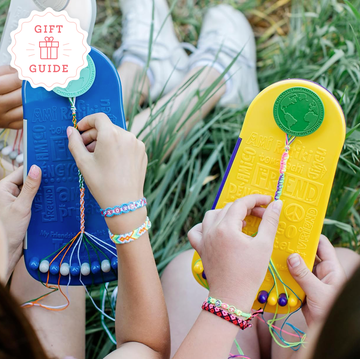Floor cleaning can feel like a never-ending chore, but if daily tidying isn’t on your schedule, a robot vacuum can step in to help. While these devices won’t entirely eliminate the need for manual cleaning, they can significant reduce how often you’ll need to do it.
At the Good Housekeeping Institute Cleaning Lab, we rigorously test a wide variety of vacuums to ensure our hand-picked lists of the best vacuums stay up-to-date. For this guide, we've spent almost 300 hours testing 15 robot vacuums. To evaluate robot vacuums and robot mops, we put them through their paces in our custom-designed, two-room obstacle course. We observe how well they transition from hard floors to carpets, tackle debris along walls and in corners, maneuver under and around furniture and handle obstacles placed in their paths. Additionally, we measure their ability to pick up dry debris and pet hair from both carpets and hard floors. Here are the top-performing models we've tested to fit a range of budgets.
Want even more from our cleaning experts? Sign up for Good Housekeeping's FREE pop-up spring cleaning newsletter!
Best overall
The Roborock Q Revo vacuums and wet-mops simultaneously, using circular pads that spin at an impressive 200 rotations per minute. We found this high-speed scrubbing ensures floors are thoroughly cleaned, lifting dirt and debris effectively. Users with carpets up to 7 millimeters high don’t even need to remove the mopping pads to vacuum, as the robot intelligently detects carpets and lifts the pads to prevent wetting. (The pads also don’t require removal after every use, thanks to the robot’s self-cleaning and drying mechanism when it returns to its dock.)
The Q Revo features a rubber brush instead of traditional bristles, which helps reduce pet hair tangles, too. While we noticed a small amount of fur caught in the brush’s corners during testing, it was never enough to cause a clog. The brush roll is also easily detachable for quick maintenance and cleaning — and its "floating" design adjusts seamlessly to uneven surfaces.
In our hard floor cleaning tests, this vacuum performed exceptionally well, picking up nearly all the debris we scattered. However, like many models we’ve tested, it wasn’t as thorough on carpets. While it effectively removed surface messes, some heavier, embedded debris like sand remained behind. The charging dock automatically empties the dustbin into a larger dust bag, a feature we appreciated. We also liked that the dustbin includes a HEPA filter that’s simple to pop out for washing or replacing.
Using the companion app, you can schedule cleanings for specific rooms, set boundaries to restrict the robot’s movement and track its cleaning route in real time. For rooms needing extra attention, the app allows you to adjust cleaning intensities easily, providing a customized cleaning experience.
Best value
The Eufy 11S Max robot vacuum delivers high-end features, like automatic suction adjustment, at an incredibly appealing price point. Its sleek and ultra-slim design — standing just under 3 inches tall — allows it to easily glide under low-profile furniture like ottomans and couches, tackling even the hardest-to-reach dirt.
We’ve previously tested and been impressed by other Eufy models, including the RoboVac G20 and RoboVac X8, so we’re confident recommending this newer unit. Equipped with BoostIQ Technology, it automatically increases suction power when detecting dirtier areas. We also like that its large wheels allow smooth transitions between medium-pile carpet, hardwood and tile, though it can't pass thresholds taller than 0.65 inches, so it may struggle with taller door ledges. Sensors on the underside prevent falls from ledges or stairs, while laser navigation ensures it maneuvers effectively without bumping into walls or furniture.
The included remote control offers added convenience, allowing you to activate spot-cleaning or focus on the edges of a room. Like most robot vacuums, the 11S Max is designed to return to its charging base when the battery runs low, fully recharging itself before its next cleaning session.
Best for carpets
Shark AI’s compact design and self-emptying bin make it a standout choice, especially for carpet cleaning (it's our best overall pick in our roundup of the best robot vacuums for carpet). Its streamlined footprint impressed us, and setup was a breeze — it's ready to clean with just the press of a button.
The robot navigated tight spaces and cleaned under kitchen cabinet toe kicks without getting stuck. However, the LIDAR sensor on top makes it too tall to fit under some low-profile furniture. After methodically covering our test floors, the Shark returned to its dock and emptied every speck of debris it collected. On carpet, it performed exceptionally well, lifting nearly all debris in our tests. Impressively, during one trial, it even returned to pick up a missed piece of debris on its second pass. Be aware, though, that the dustbin emptying process is quite loud, but it lasts only about 20 seconds.
The dustbin in the base is easy to remove and empty, and the filters in both the robot and the dock are washable — though only the base filter is HEPA-certified. Other notable features include a self-cleaning brush roll that minimizes hair tangles, an UltraClean mode that revisits areas three times for a deeper clean and the ability to glide smoothly over lightweight rugs and mats that sometimes trip up other robots.
The SharkClean app enhances the robot's functionality with a high level of customization. Through the app, you can select specific rooms for cleaning, direct the robot to high-traffic areas or send it to handle emergency messes. Without the app, the AI Ultra is more limited, but it remains a solid performer for general cleaning tasks.
READ OUR FULL REVIEW: Shark AI Ultra Self-Empty Robot Vacuum
Best compact
Most of the robot vacuums we recommend are combination vacuum-mop units, self-emptying models or both. While these features are convenient, they typically require larger charging docks to accommodate a water tank or internal dust bag. While it lacks mopping or self-emptying capabilities, the Dyson 360 Vis Nav is a compact, reliable option for anyone prioritizing high-end vacuum performance. By focusing on the essentials, it saves space without sacrificing premium features like voice control, automatic suction adjustment and scheduled cleaning.
In our tests, this Dyson excelled at vacuuming. Its triple-action brush bar, which combines soft nylon, stiff bristles and anti-static carbon fiber filaments, effectively prevents hair tangles and clogs. During our pet hair pickup tests, none of the faux fur caused clogs, and the brush bar’s near-full-width design allowed it to clean the same area in fewer passes.
The Vis Nav also impressed us with its exceptional suction power. In our carpet pickup tests, it outperformed all other models at removing heavy debris like sand. While it doesn’t have a self-emptying base, we found maintenance to be simple. The dustbin detaches easily, and a one-touch ejection button lets you quickly dispose of debris directly into the trash.
Smart features elevate its usability: the app enables room mapping, no-go zones and scheduled cleaning. It also generates heat maps showing the dirtiest and cleanest areas of your floors, with the vacuum adjusting suction levels in real time to tackle tough spots.
READ OUR FULL REVIEW: Dyson 360 Vis Nav Robot Vacuum
Easiest to maintain
Many robot vacuums and combo units include time-saving features like self-emptying bases or systems to wash and dry mop pads between cleanings. However, the Noesis Florio stands out as the only vacuum-mop combo we’ve tested that can automatically switch out its mop pads.
Instead of relying on reusable pads, it uses disposable ones stored in a drawer within its charging base. Dirty pads are dropped into a waste drawer when they’re finished, and you can customize how often the pads are changed using the app. (As a bonus, the charging base even includes an air freshener.) While the Florio is pricier than some of the other combo robots we recommend, we think its unique maintenance features make it a worthwhile investment.
The Florio also excelled in our vacuuming performance tests. It navigated and cleaned our two-room obstacle course faster than almost any other model we’ve tested. On bare floors, it impressed us by lifting an average of 96% of debris. When the robot returns to its dock at the end of a cleaning session, it empties its dustbin into a larger bag in the base and refills its water tank for mopping, offering a truly hands-free experience.
By default, the Florio vacuums and mops simultaneously, but you can adjust its settings in the app to perform either task independently. While mopping, we did notice it left occasional water droplets behind, so it’s important to allow floors to dry completely after cleaning. For its efficiency, innovation and ease of use, the Florio is a standout choice for those seeking advanced cleaning solutions.
Best for large houses
The Dreametech L10s Ultra navigated our test courses effortlessly, rarely bumping into obstacles and efficiently cleaning under low-profile furniture like sofas. With its long runtime, spacious dustbin and excellent maneuverability, this model is a great choice for larger homes.
The L10s Ultra functions as both a vacuum and a mop. On carpets, it automatically raises its mopping pads, allowing for seamless dry and wet cleaning in one session. In our tests, it excelled at removing pet hair from carpets, with none of the hair tangling in the brush roll or clogging the dustbin — it was all automatically emptied into the dock’s spacious 3-liter dust bag.
Transitioning from hard floors to carpets was smooth, as the mopping pads lifted promptly. We appreciated that the included cleaning solution has its own designated spot in the dock, eliminating the need to mix it manually into the water tank. During mopping, sticky stains noticeably lightened after just one pass. The dock also automatically washes and dries the mopping pads upon the robot's return.
Among 10 comparable robots, the L10s Ultra earned the second-highest maneuverability score. It expertly navigated around obstacles, cleaned tight edges and corners and effectively picked up debris beneath furniture.
The app stood out to us for its user-friendly design, allowing you to adjust water and suction levels, schedule cleaning tasks and even view a live feed from the robot’s camera. While it is one of the pricier models we've tested, we think the L10s Ultra's superior performance, advanced features and ease of use make it well worth the investment.
How we test robot vacuums
The Good Housekeeping Institute Cleaning Lab has been testing vacuum cleaners for over 100 years. Using standardized procedures developed by the International Electrotechnical Commission and ASTM International, we dedicated nearly 300 hours to evaluating 15 robot vacuums, collecting a total of 405 data points to score each model. Since then, we’ve tested even more units to keep our insights current.
In our 107-square-foot, two-room test enclosure, we assessed each robot’s performance in straight-line pickup and obstacle navigation on hard floors and carpet. We also evaluated their ability to maneuver under furniture, navigate tight corners, overcome bumps and transition seamlessly between hard floors and carpets.
Beyond performance, we tested ease of use by examining how intuitive the controls were, the clarity of the initial setup, and how simple it was to remove and clean all components after use. We also rated the user manuals for their helpfulness and clarity.
For our straight-line pickup tests on hard flooring, we spread large and small debris within a marked area proportional to the width of each robot vacuum’s nozzle. Each robot vacuum is given 10 minutes to clean and the debris collected is weighed to determine how much was picked up. Straight-line pickup tests on carpet are conducted in an enclosed area with a mix of potting soil, sand and rayon fibers designed to simulate pet hair. After a set cleaning time, the dustbin is weighed to measure the debris collected.
Obstacle pickup tests are conducted across both rooms of our testing enclosure, with a mix of oatmeal, orzo, baking soda and sand scattered throughout. The robots are tasked with navigating under a couch and coffee table, crossing over an area rug, and passing through a doorway to collect debris. After cleaning, we calculate the pickup percentage by weighing the dustbin to determine how much debris was captured.
Buying guide
When shopping for a robot vacuum, keep these key factors in mind:
FAQs
Why trust Good Housekeeping?
Carolyn Forté, the Good Housekeeping Institute's Home Care and Cleaning Lab executive director, has over 40 years of experience testing and writing about all kinds of vacuums. For this roundup, she oversaw all of the testing conducted by Lynn Redmile, the testing and product review analyst who conducted our Lab's last full category test of robot vacuums where three of the picks on this list came from. Two of the newer picks in this story were tested by Carolyn personally and by our panel of consumer testers in consideration for the most recent Good Housekeeping Best Cleaning and Organizing Awards.
Noah Pinsonnault works as a product reviews analyst in the Home Care & Cleaning Lab where he helps design and perform tests on various product categories. He tested additional models and scoured through previous testing notes to prepare the latest updates to this guide.
Carolyn Forté brings more than 40 years of experience as a consumer products expert to her role as executive director of the Good Housekeeping Institute's Home Care and Cleaning Lab. Using deep analytical testing and writing expertise in appliances, cleaning, textiles and organizational products, she produces cleaning and home care advice for GH, has authored numerous books and bookazines for the brand and partners with the American Cleaning Institute to co-produce the Discover Cleaning Summits. She holds a bachelor's degree in family and consumer sciences from Queens College, City University of New York.
Noah works as a product reviews analyst in the Home Care & Cleaning Lab where he helps design and perform tests on various product categories. He draws on scientific expertise garnered during his time as an environmental researcher, where he managed environmental monitoring equipment, analyzed water samples in a lab and developed protocols for restoration projects. He holds a Bachelor’s Degree in environmental science from the University of Wisconsin-Superior.
Lynn Redmile (she/her) is a contributing product reviews analyst at the Good Housekeeping Institute, where she's been evaluating nutrition, fitness, travel services, beauty, textiles, home, pet, and cleaning products since 2012. She is passionate about figuring out how things work and experiencing their full potential, and brings over three decades of data analysis and project management experience to the role.


